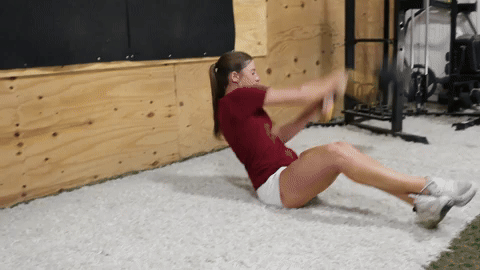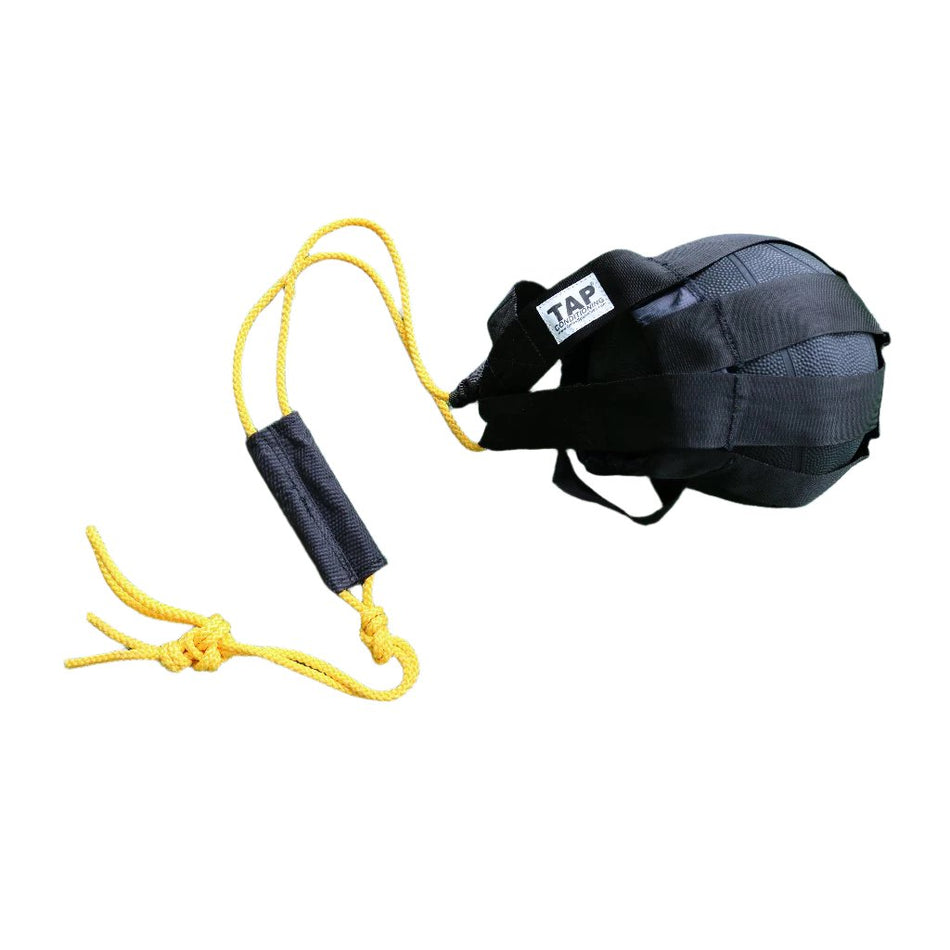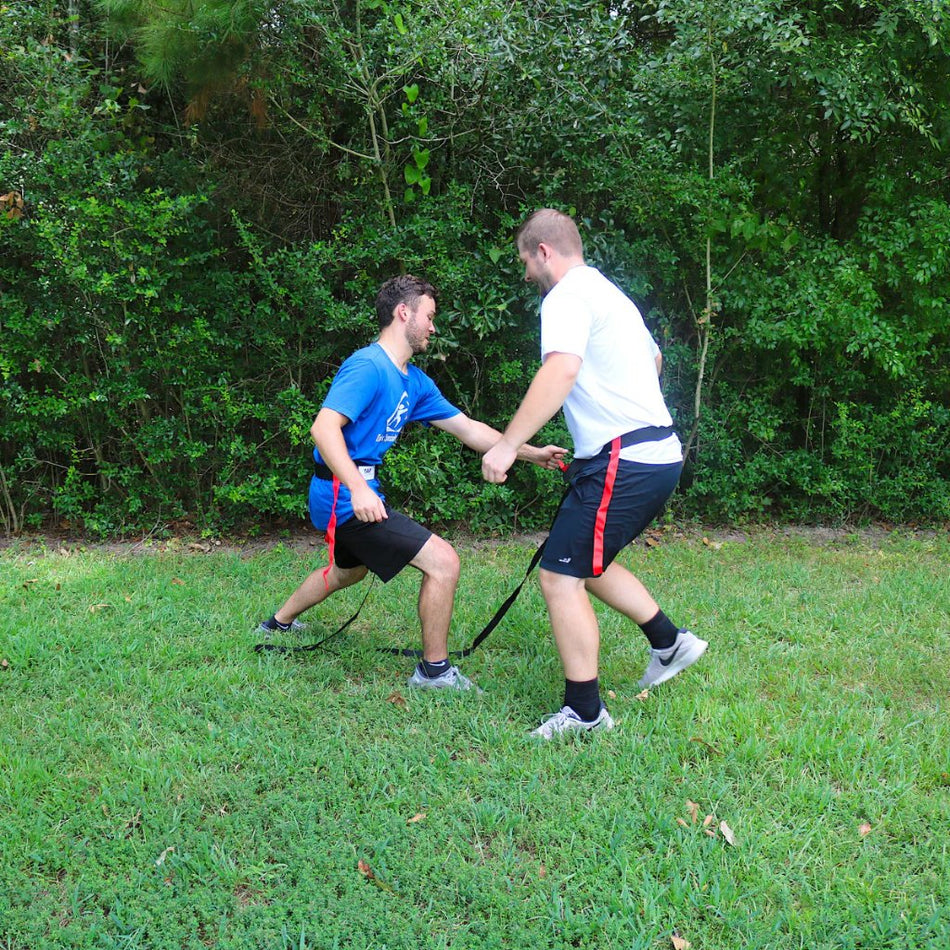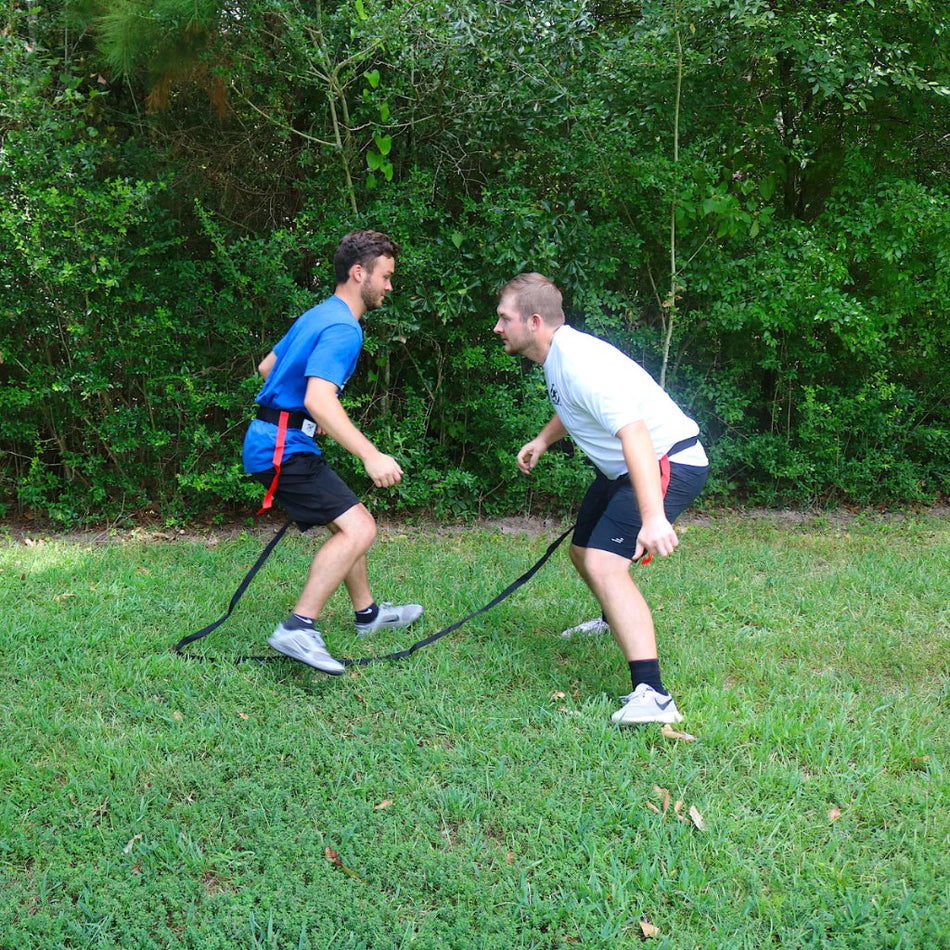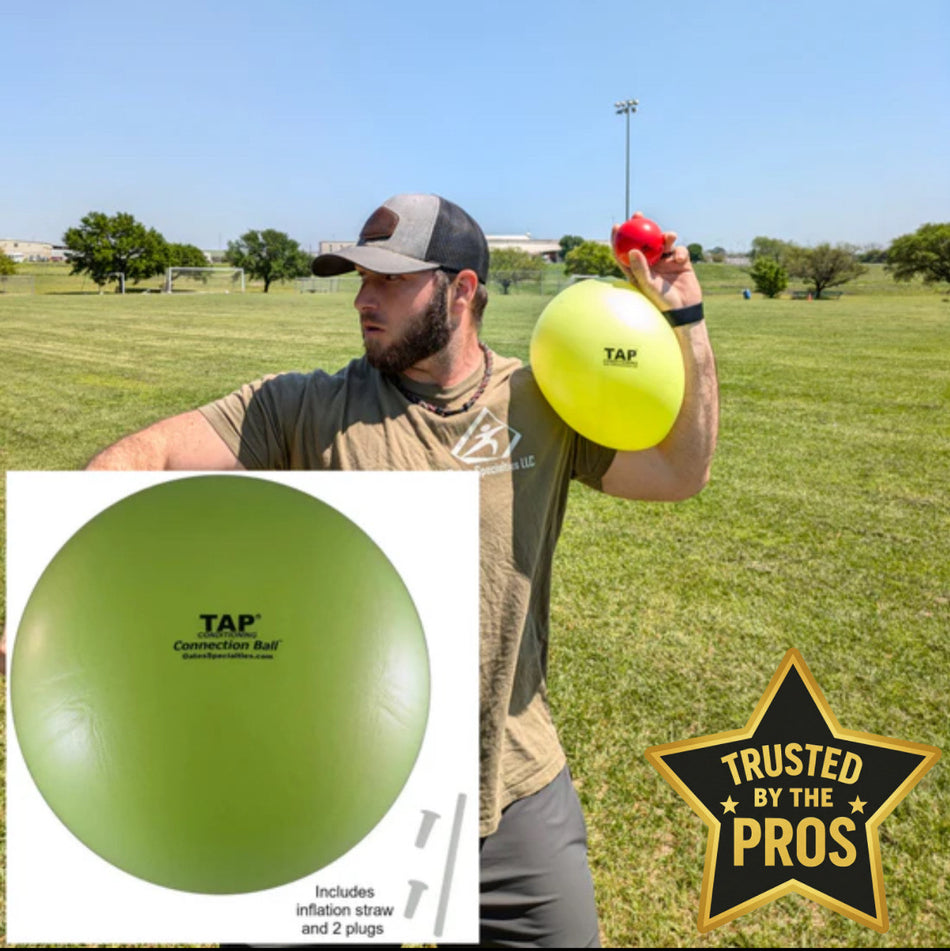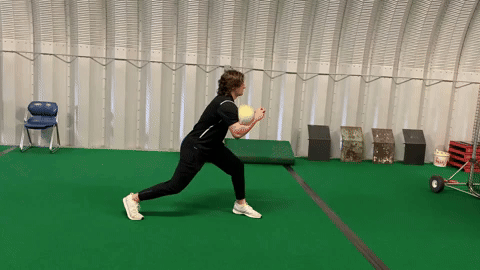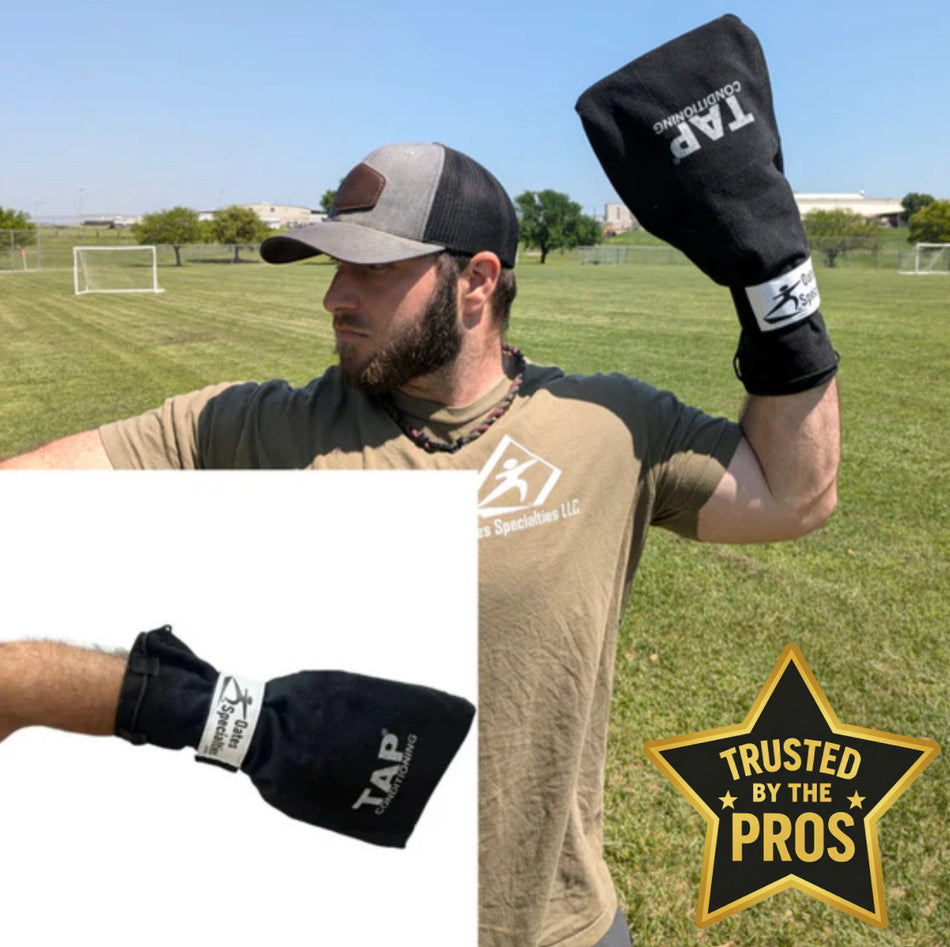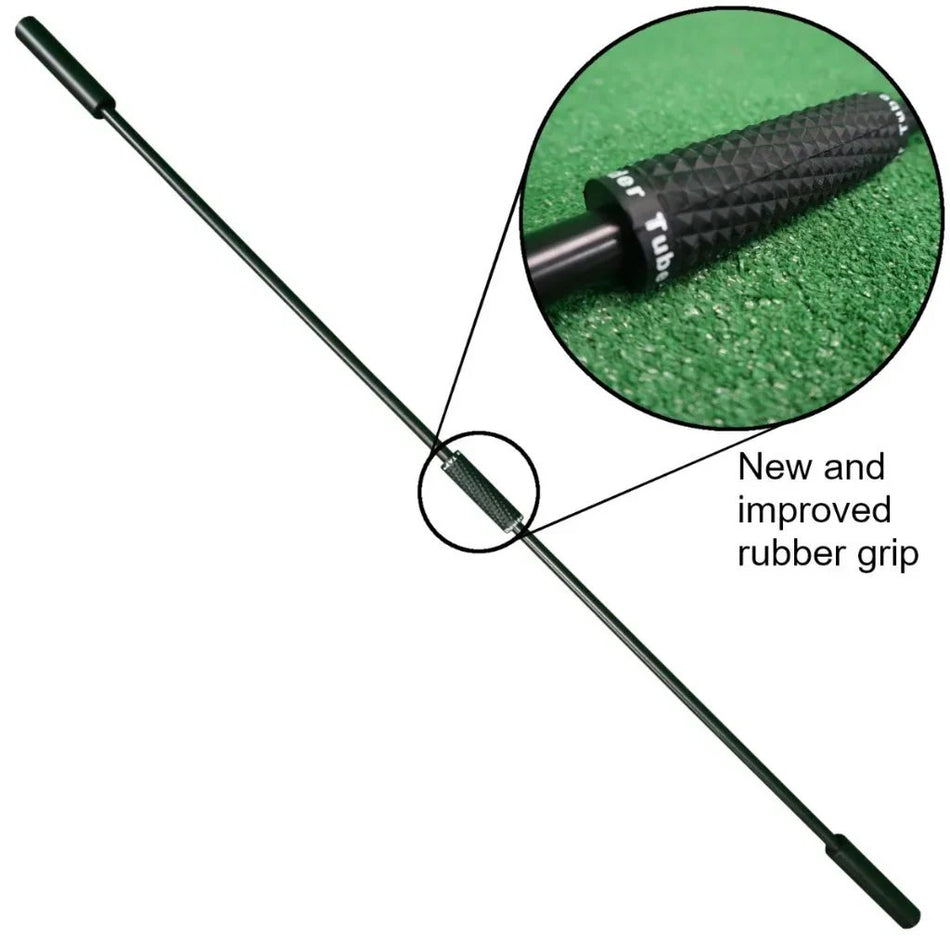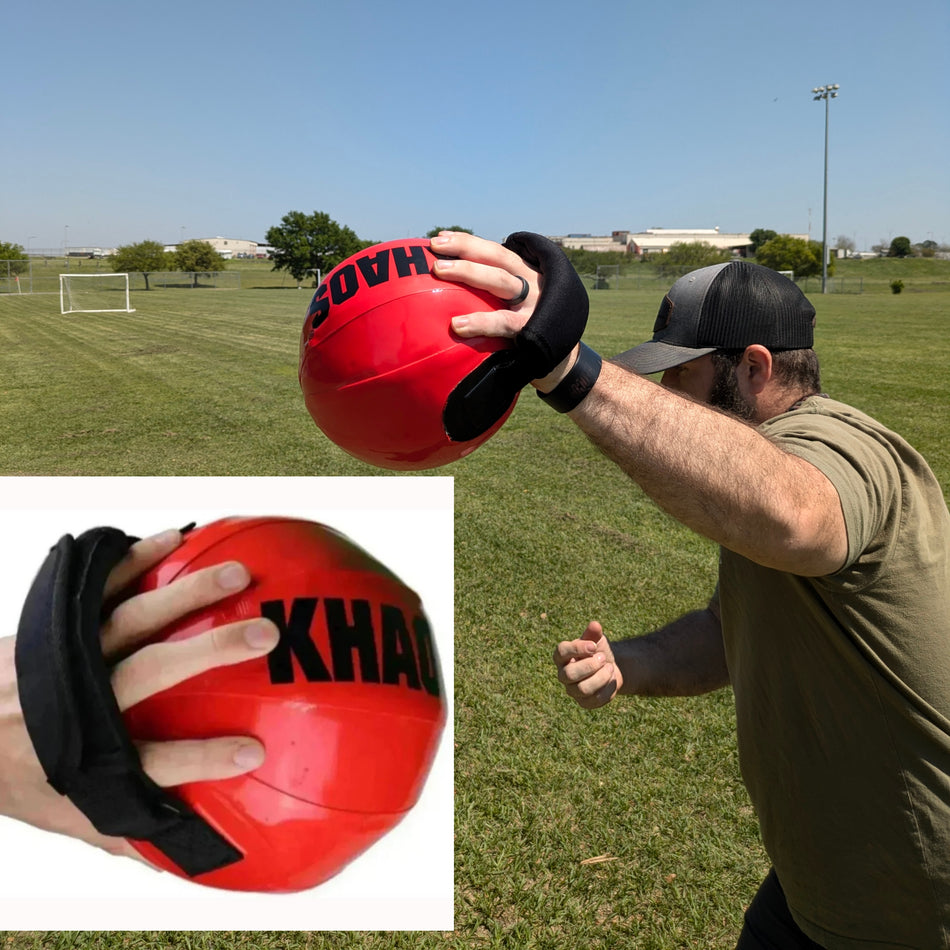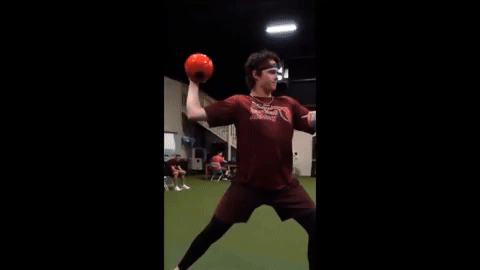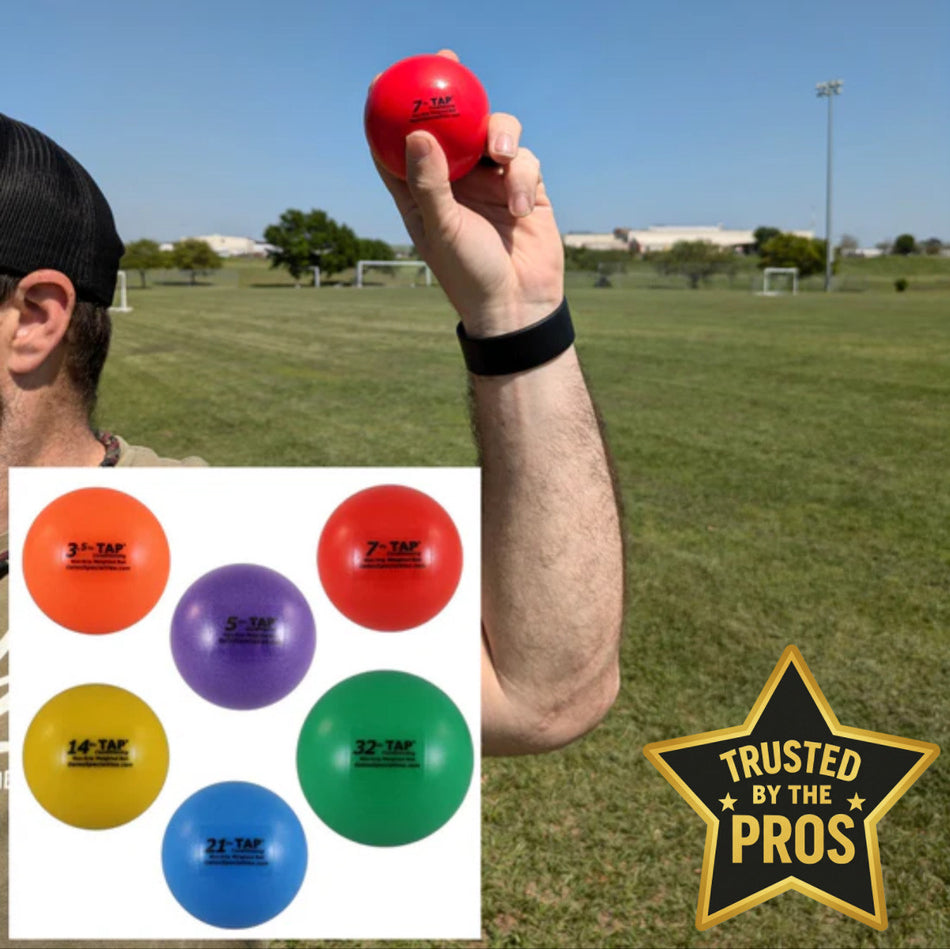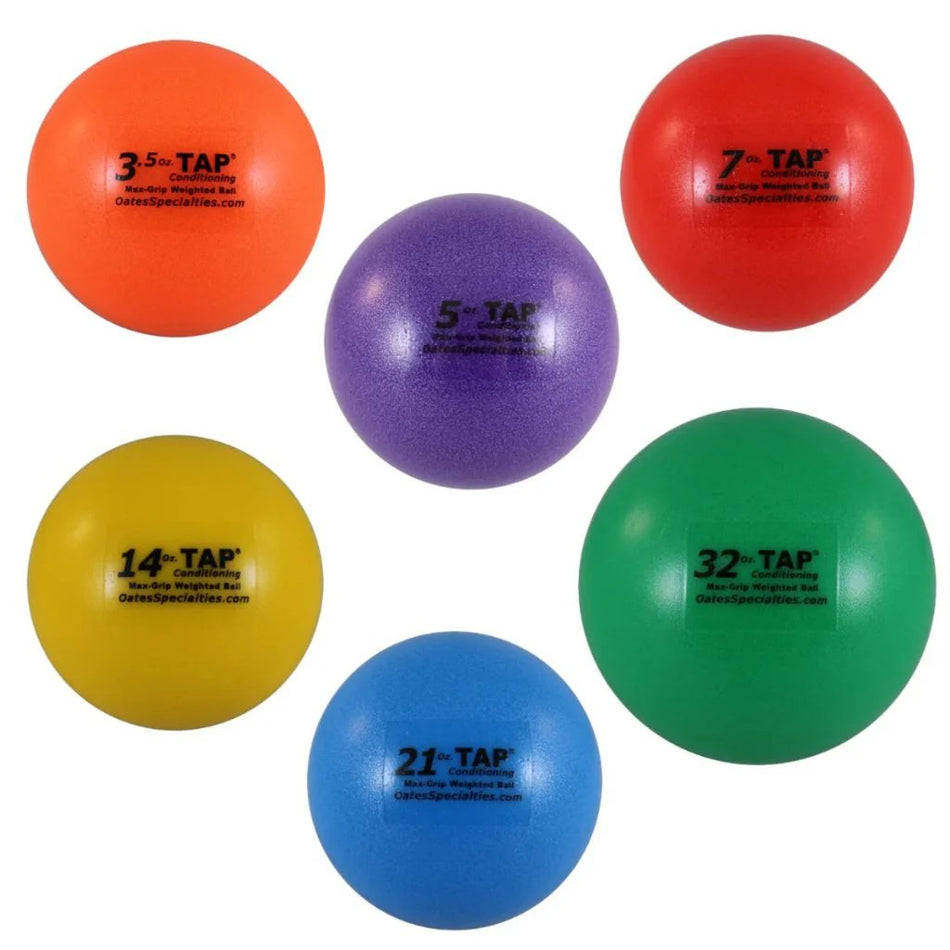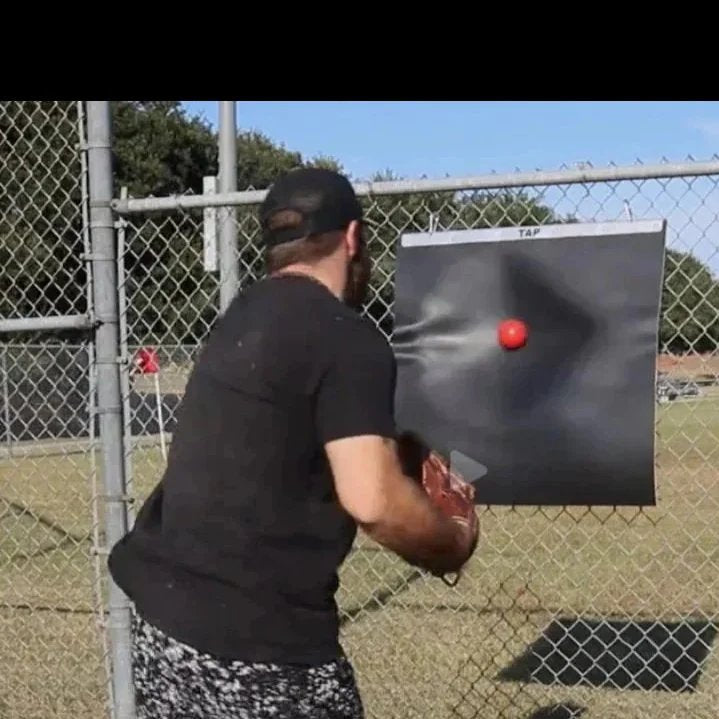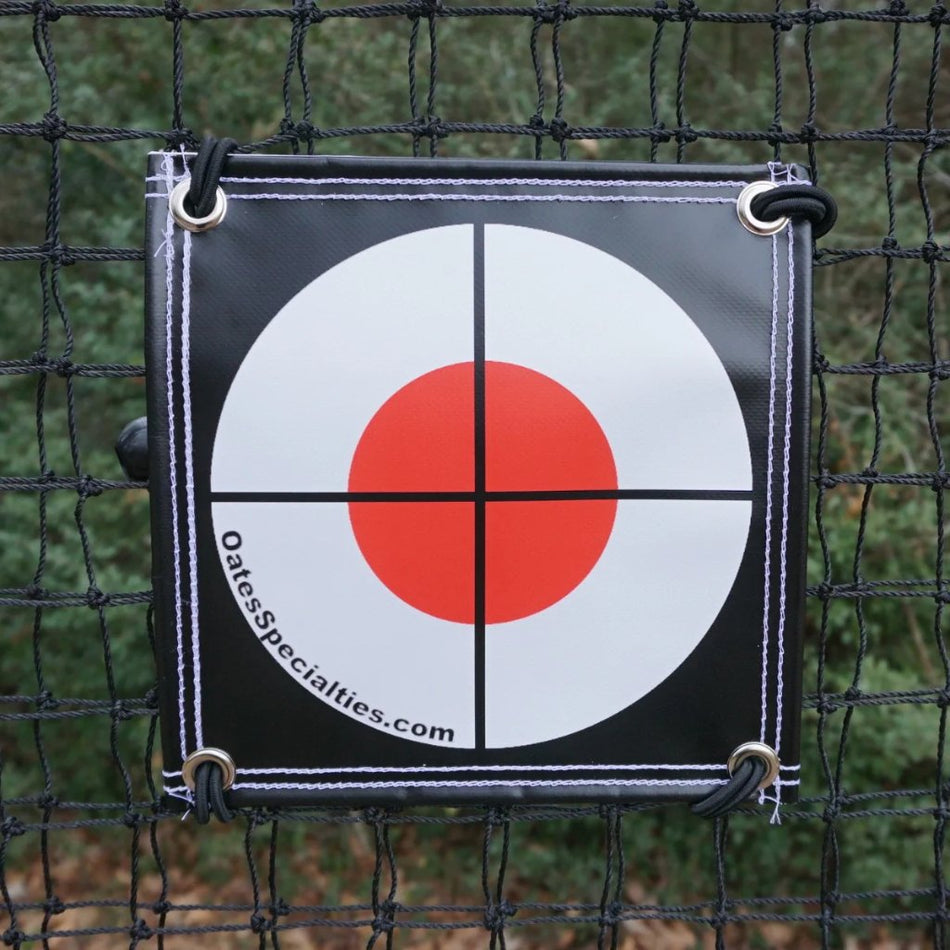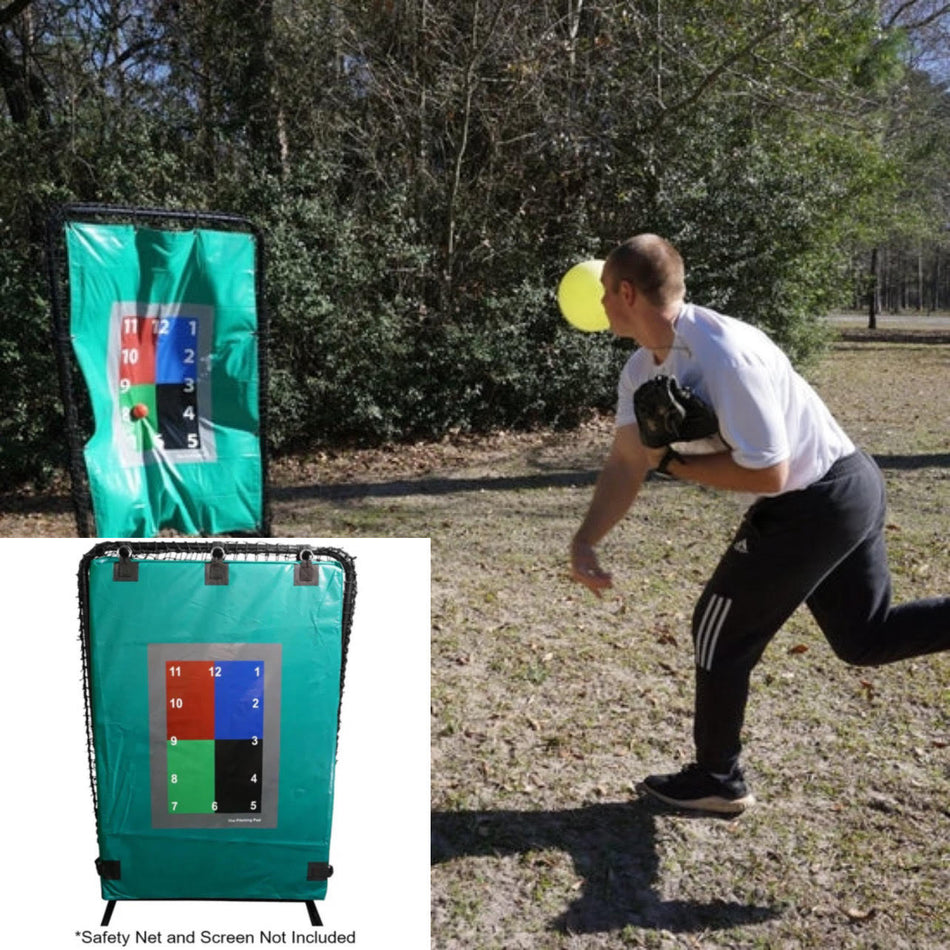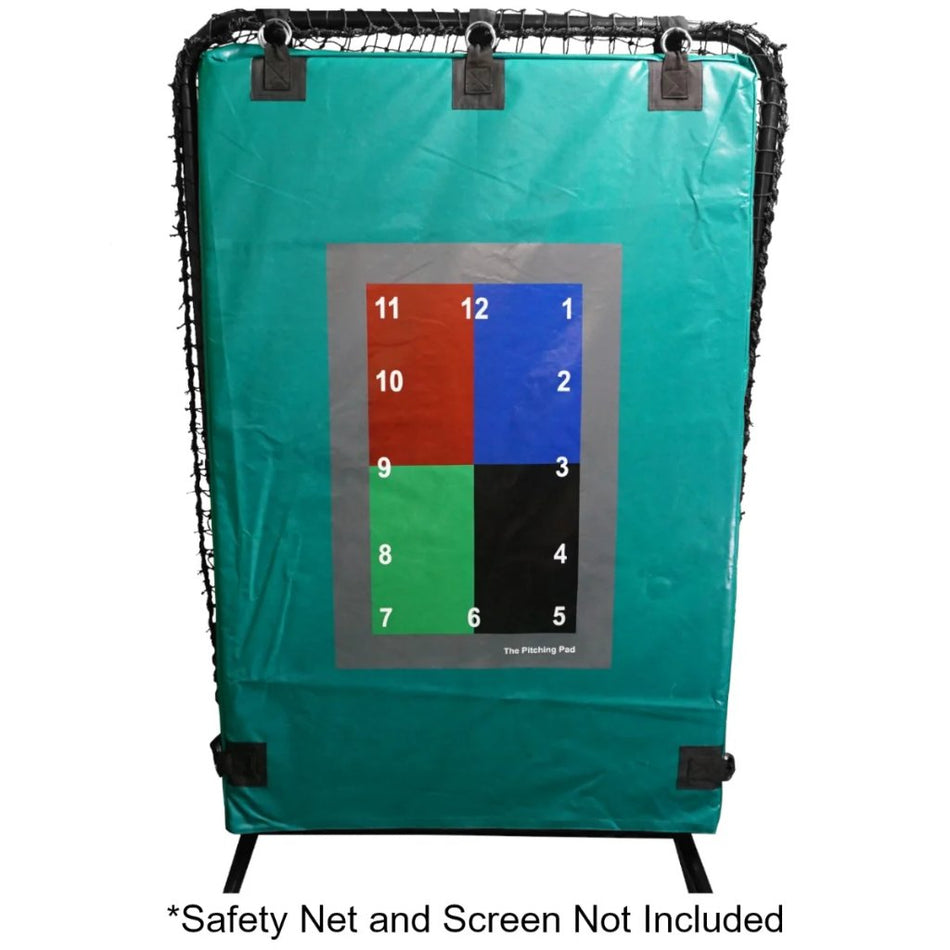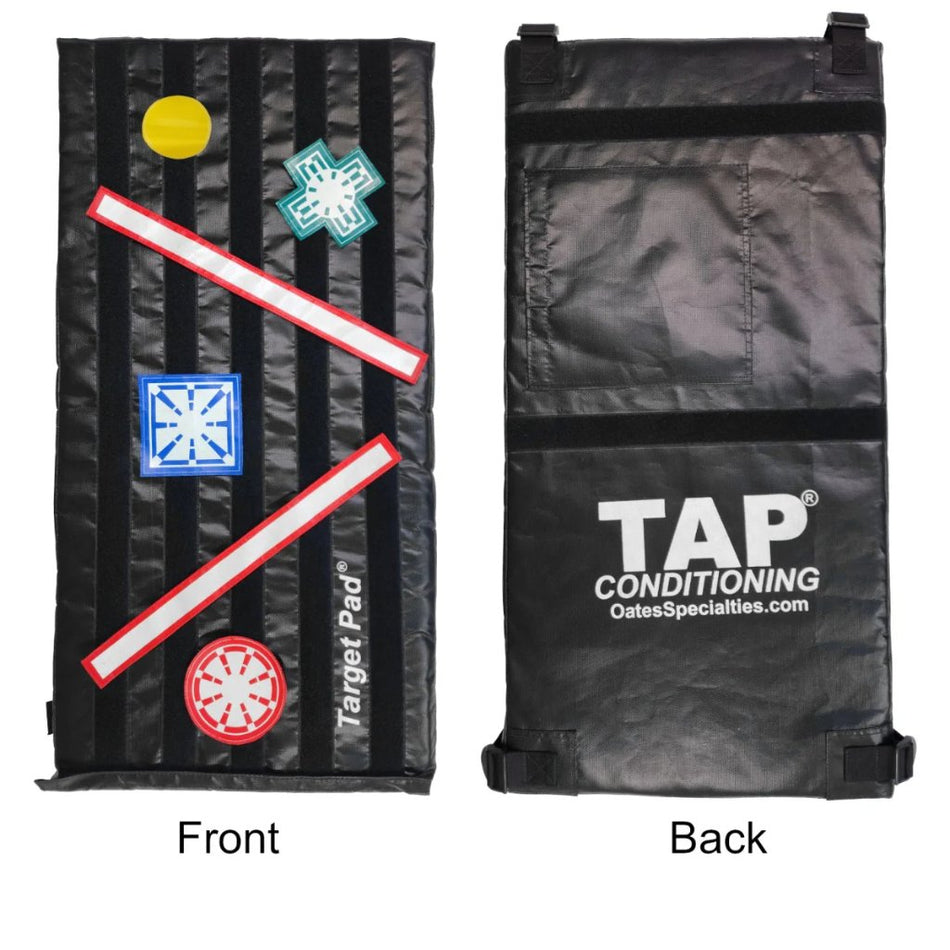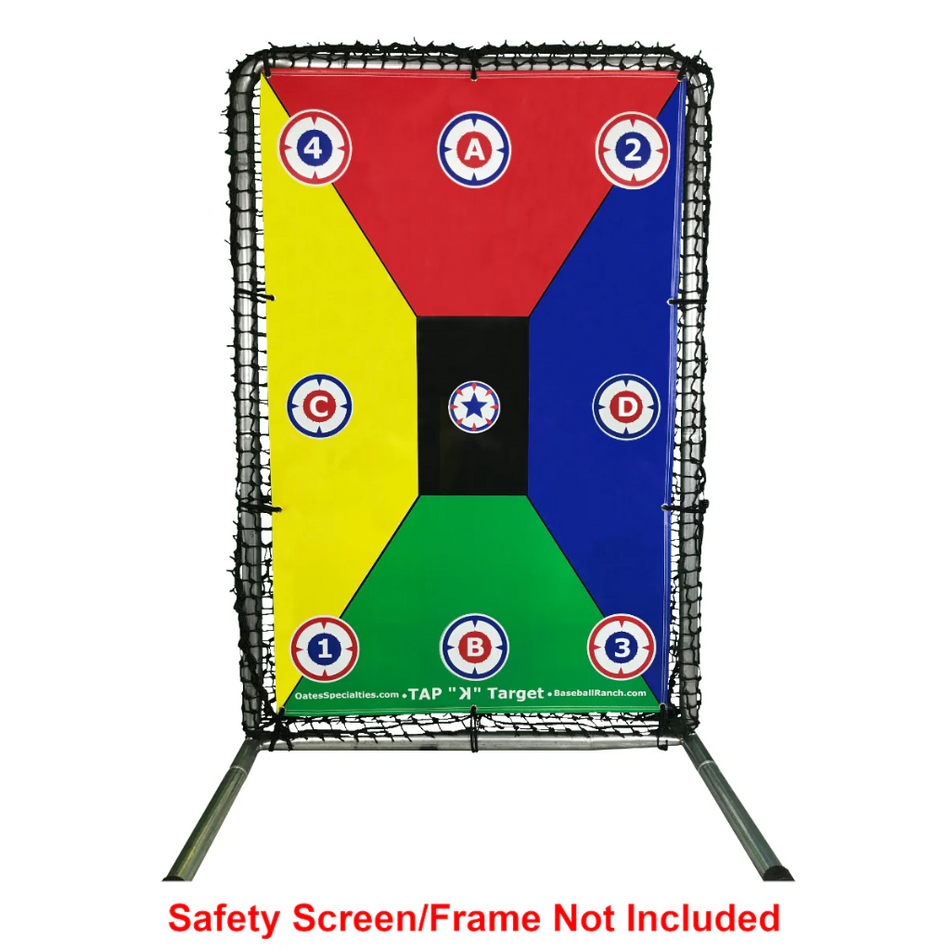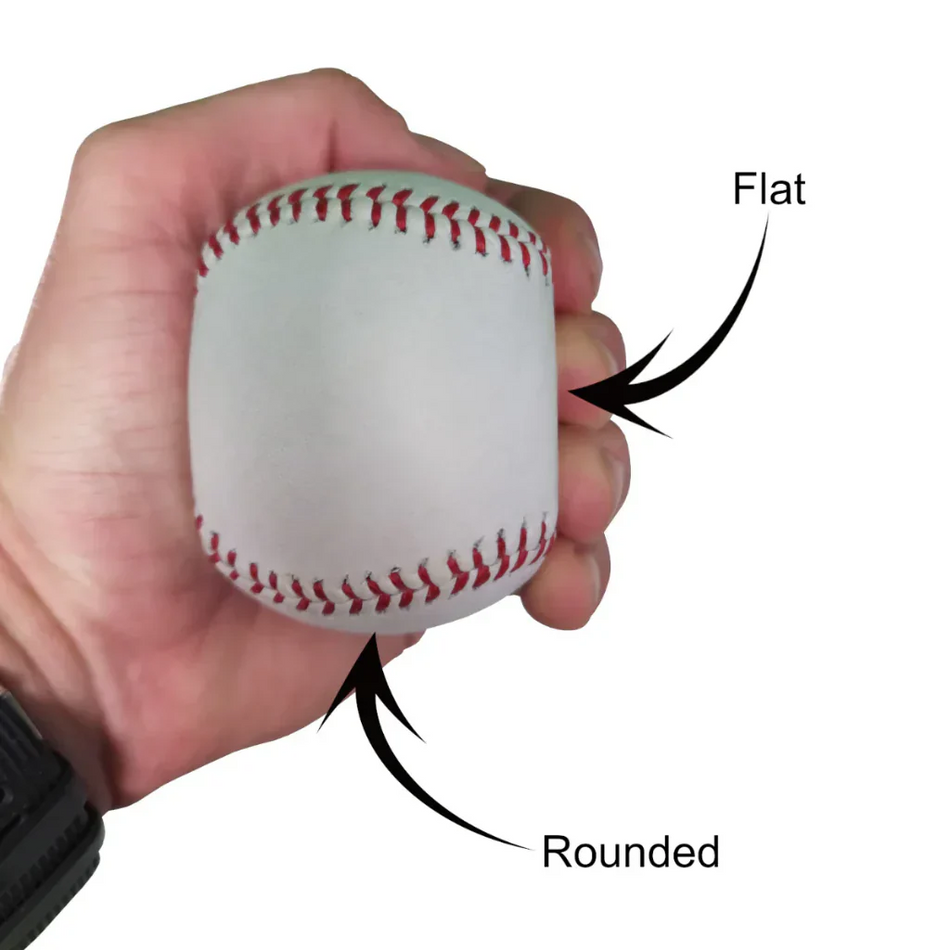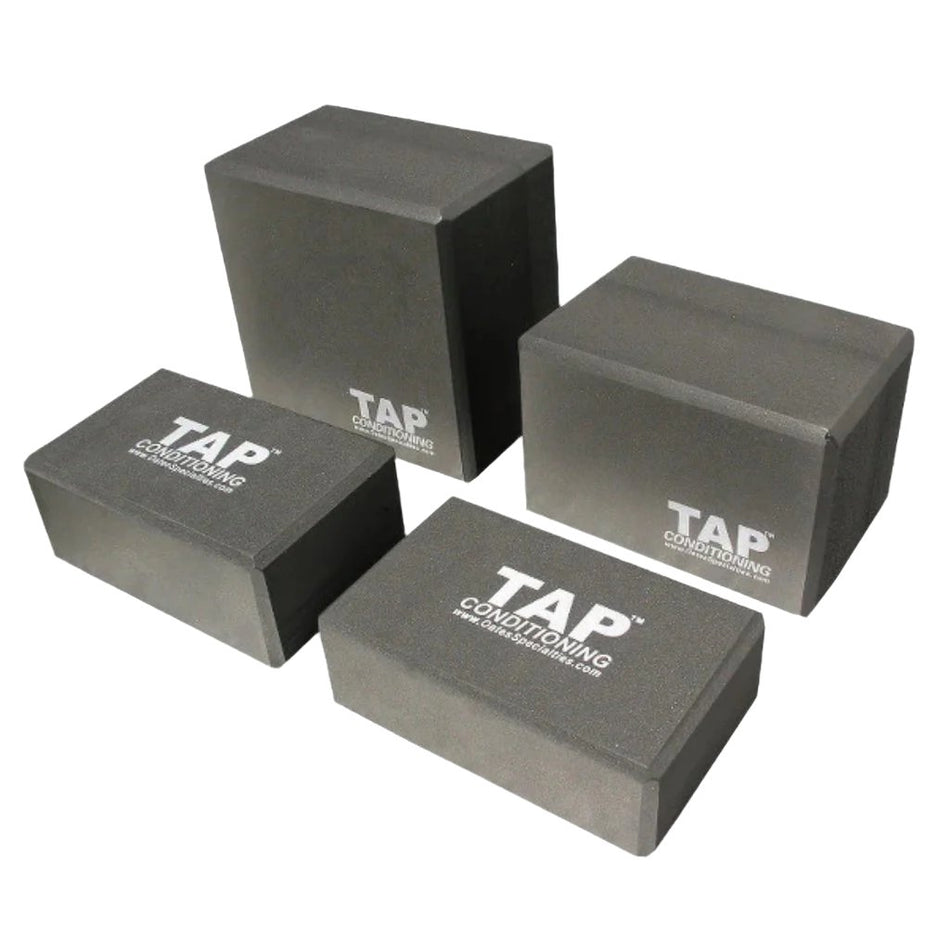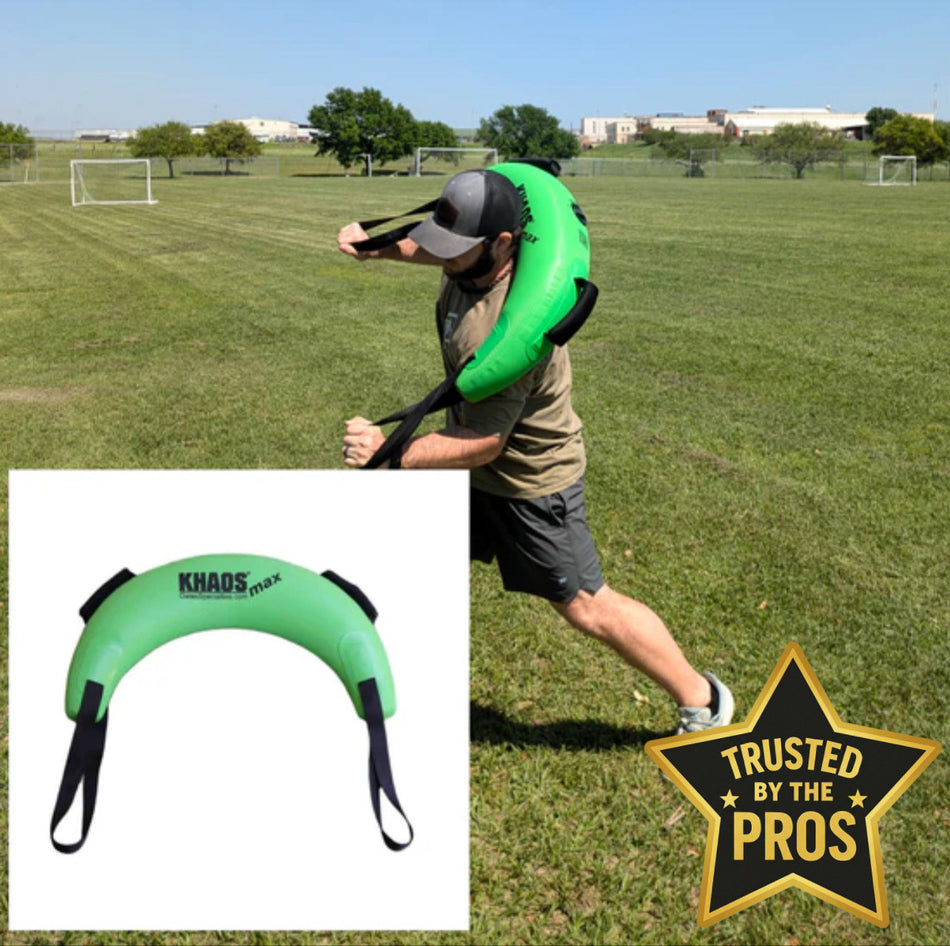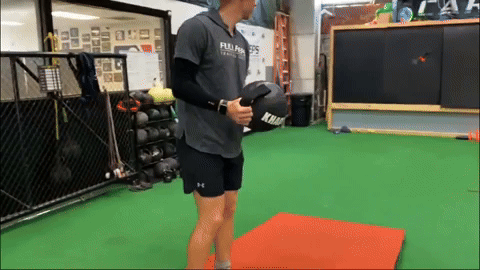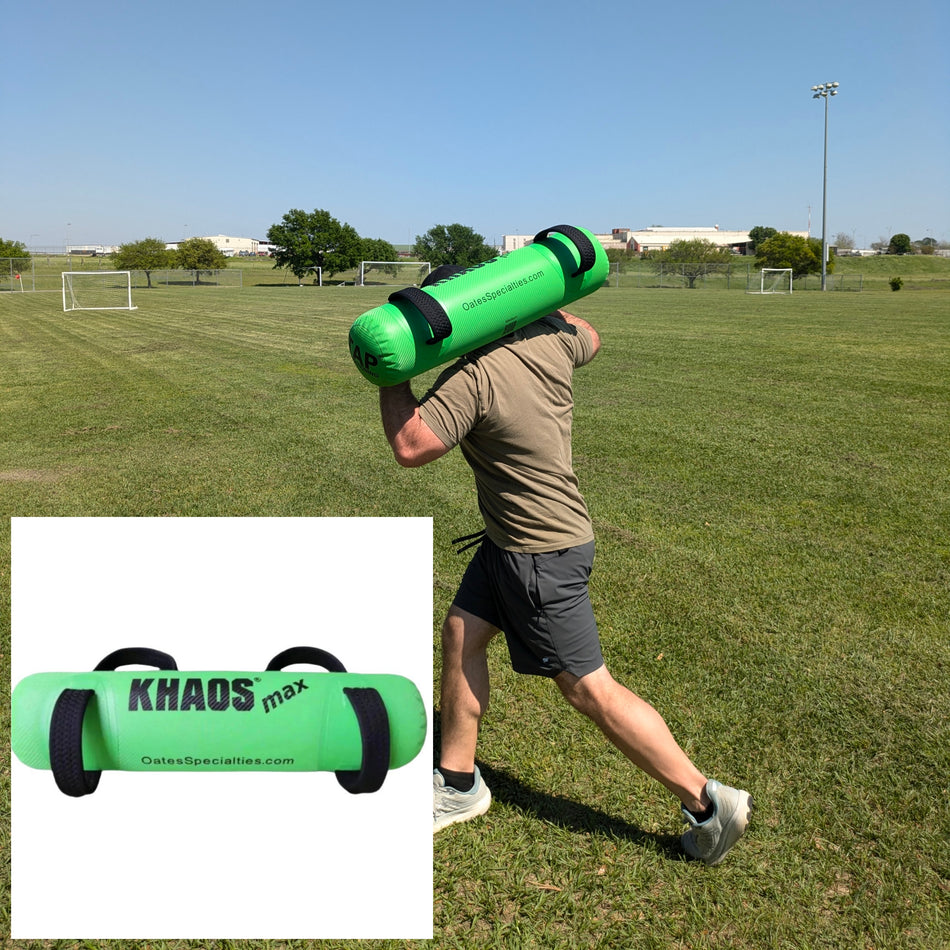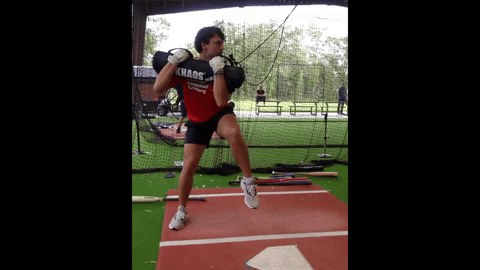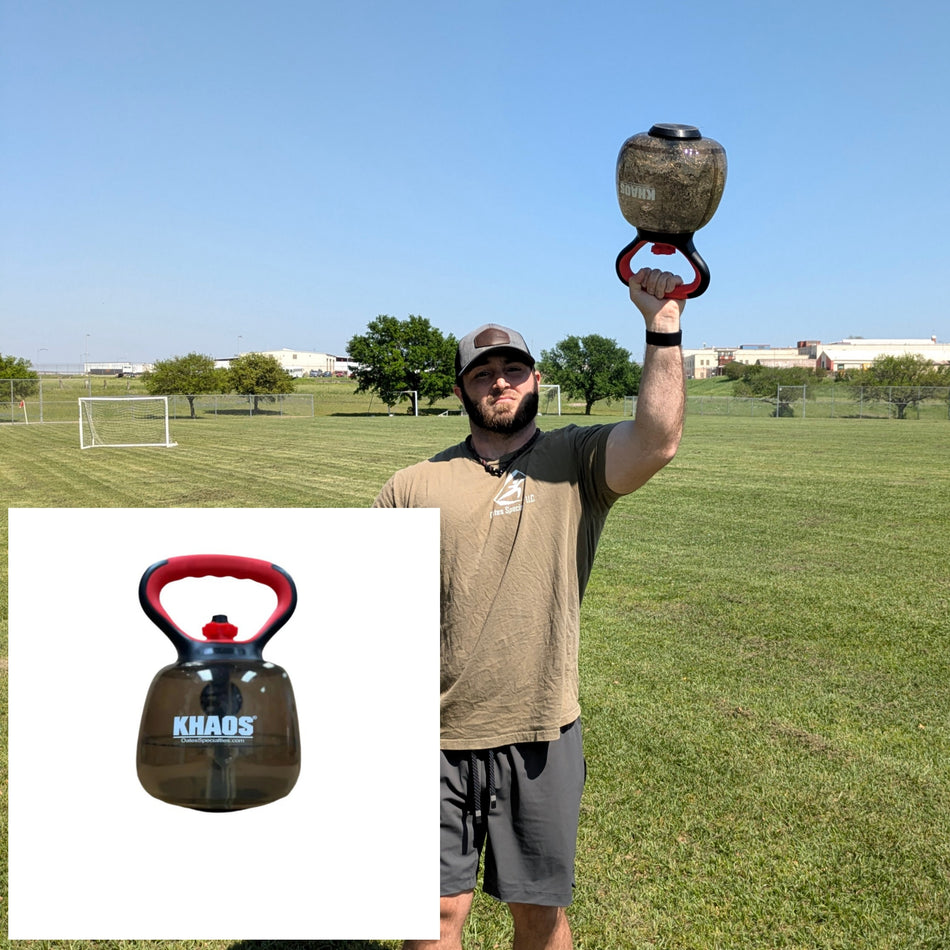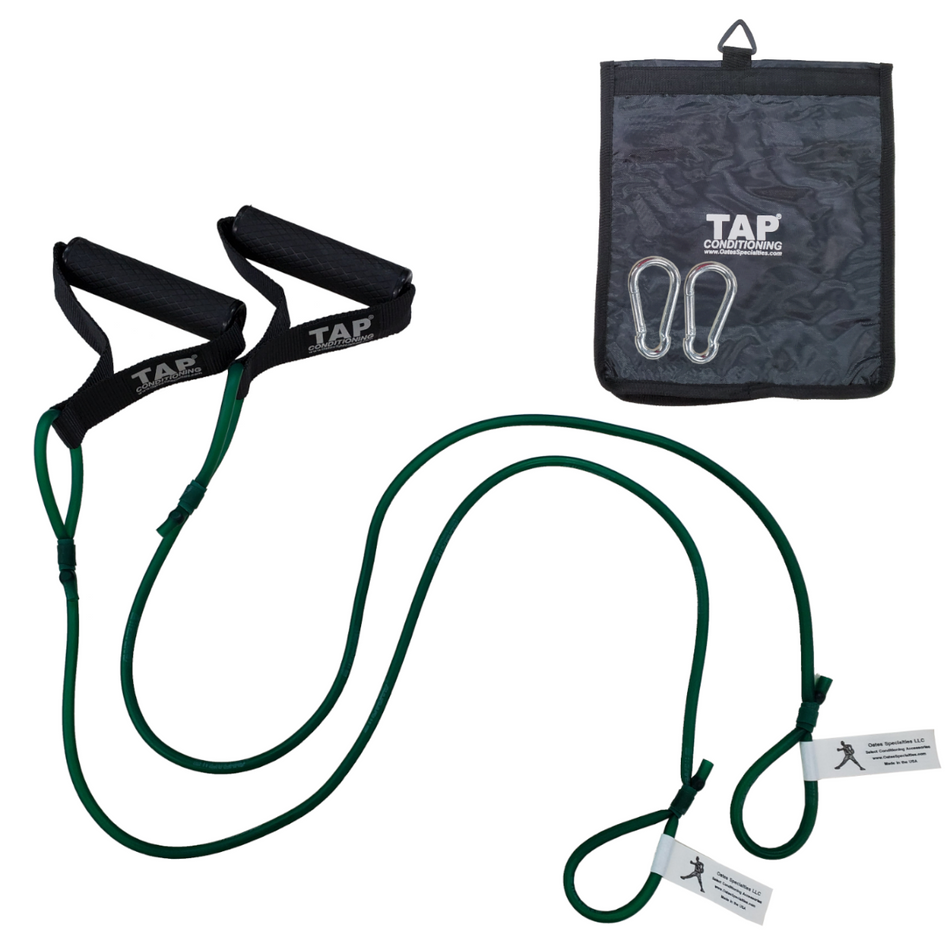The TAP® Speed & Power Training System: A Scientific Approach to Explosive Athletic Development
Evidence-based training protocols for baseball, volleyball, and tennis athletes seeking measurable performance gains

Why Your Current Training Isn't Getting You Results
You're strong in the gym. You train hard every day. But when it comes to game time, your throwing speed, exit velocity off the bat, serving power, or attacking force just isn't where you want it to be.
The problem is that most training equipment only works on one thing at a time. Heavy medicine balls help you get stronger, but they make you move too slowly to develop sport specific explosiveness. Light balls let you move fast, but they don't make your muscles work hard enough.
The solution? Train speed AND power together using the right tools designed specifically for explosive athletic movements.
What Makes TAP® Speed & Power System Training Different
The TAP® Speed & Power System combines three research-backed training methods into one complete package:
Variable-Resistance Ballistic Training (Speedball + Hammer Net)
The 1.5-pound Speedball in our specially designed containment net creates what exercise scientists recognize as ballistic training - explosive movements where the object is accelerated through its full range of motion. The variable grip length allows you to adjust resistance using leveraged weight throughout the movement pattern, creating training adaptations that transfer closely to competitive performance. This system enables both full-range explosive movements and rapid oscillatory training, depending on your grip position and movement pattern selected.
Proprioceptive Training Enhancement (Pummel Balls)
Our sand-filled Pummel Balls introduce unstable load characteristics that create proprioceptive challenges during training. Research demonstrates that proprioceptive training interventions show substantial motor performance improvements averaging 52% across outcome measures, validating the effectiveness of unstable load characteristics in training equipment (Aman et al., 2015). The 8-inch diameter was selected based on biomechanical principles of optimal grip security for explosive movements, following industry recognition that grip strength is crucial for maximum-effort throwing exercises. The no-bounce design eliminates dangerous rebounds while conserving training space - features recognized as essential safety advantages in professional athletic equipment design.
Velocity-Focused Training (2lb Pummel Ball)
The lighter Pummel Ball maximizes movement velocity while maintaining the proprioceptive benefits of unstable load training. This weight range is ideal for developing explosive speed in movements like medicine ball slams, chest passes, and overhead throws, where rapid acceleration and high movement velocity are the primary training objectives.
Strength-Foundation Training (6lb Pummel Ball)
The heavier ball builds the raw power needed for explosive movement while amplifying the proprioceptive challenges through increased internal weight shifting during explosive movements. This enhanced core stability demand improves coordination and trunk activation patterns essential for athletic performance.
When you alternate between heavy and light training in the same workout, something scientifically documented happens...
The Science Behind Mixed-Load Training
When you use heavy resistance followed immediately by light, explosive movement, your nervous system experiences what scientists call Post-Activation Potentiation (PAP).
Here's how it works:
- Heavy 6lb ball activates your fast-twitch muscle fibers
- Your nervous system stays activated for optimal duration
- Light 2lb ball exercises become more explosive than baseline performance
- Over time, this builds measurably greater overall power and speed
Real Research Results
A 6-week study with competitive handball players found significant improvements in throwing velocity and shoulder strength - exactly what overhead athletes need.
Another comparative study found that training programs using different weighted balls with equivalent workloads enhanced 2-handed overhead throwing velocity more effectively than single-weight approaches.
Why Size and Design Matter
Better Grip Design
Regular medicine balls are 13-14 inches wide, which makes them hard to hold during fast movements. Sports science shows that a good grip is key for maximum power and staying safe during explosive training. Our 8-inch size uses these proven ideas to give you better grip control. This reduces hand tiredness and lets you train harder for longer periods.
No-Bounce Safety Design
Regular medicine balls bounce dangerously during slam exercises. Training facilities report injuries from balls bouncing in unexpected ways. Our sand-filled, soft design stops dangerous bounces while using unstable load training methods. This design gives you proven safety features plus the training benefits of shifting weight inside the ball. Research shows this increases core muscle work and improves body control.
Advanced Grip Technology for Maximum Power
Basic medicine balls have smooth surfaces that slip during hard training. Our special grip texture keeps your hands connected to the ball throughout every movement. This prevents the grip problems that hurt performance with regular equipment. You can train at full intensity without losing technique or safety. The result is better power development and less risk of form problems during explosive movements - benefits that lead to better athletic performance.
Contained Training System
The Hammer Net solves a basic problem in explosive training - having to chase equipment after each rep. Sports science shows that contained training systems make workouts more efficient while removing safety risks from rolling or bouncing equipment. This approach uses proven training efficiency methods, creating changing resistance through controlled bounces instead of balls flying everywhere.
Your 12-Week Training Plan
Weeks 1-4: Build the Foundation
Goal: Learn proper movement patterns and prepare your body for intense training
- Training: 3 times per week
- Hammer Net + Speedball: 3 sets of 8 swings (focus on smooth movement mechanics)
- 2lb Pummel Ball: 3 sets of 10 throws or slams (build speed gradually)
- Rest: 60 seconds between sets
Weeks 5-8: Combine Speed and Power
Goal: Use mixed-load training to maximize explosive power development
- Training: 3 times per week
- 6lb Pummel Ball: 5 explosive throws or slams
- Rest: 90 seconds (activates nervous system for PAP response)
- 2lb Pummel Ball: 5 maximum-speed throws or slams
- Rest: 3 minutes
- Repeat for 4 sets
- Add Hammer Net training between sets for coordination enhancement
Weeks 9-12: Game-Ready Performance
Goal: Integrate all training elements for peak competitive performance
- Training: 2-3 times per week (adjust based on competition schedule)
- Combine all three tools in sport-specific movement patterns
- Focus on movement quality over repetition quantity
- Simulate game-like intensity and timing demands
Sport-Specific Benefits
Baseball Players
- Pitchers: Build rotational power and arm speed while protecting shoulder joint integrity
- Position Players: Improve throwing velocity and reduce arm fatigue during extended competition
- Batting: Develop core rotation power essential for powerful swing mechanics
Volleyball Players
- Servers: Research-backed velocity improvements transfer directly to serve power and accuracy
- Attackers: Build explosive power needed for dominant attacking movements
- All Players: Enhanced proprioception improves defensive positioning and reaction time
Tennis Players
- Serve Power: Training transfers directly to overhead serving motion mechanics
- Groundstrokes: Build rotational strength for more powerful forehand and backhand execution
- Court Movement: Improved proprioception enhances agility and direction change efficiency
Complete System Value
Individual Item Pricing:
- 2lb Pummel Ball: $17.95
- 6lb Pummel Ball: $21.95
- Hammer Net: $29.95
- Speedball (1lb): $14.95
Total if purchased separately: $84.80
TAP® Speed & Power Bundle: $76.32
- ✅ Save $8.48 (10% off)
- ✅ FREE Shipping
Limited time offer - save 10% when you buy the complete system
Why Coaches Choose TAP® Speed & Power Bundle
- Space Efficient: Train entire teams safely in limited gym space - no chasing bouncing balls
- Progressive System: Adjust difficulty through variable grip length and ball weight selection
- Injury Prevention: Research-backed low-impact design protects joints while building explosive power
- Measurable Results: Track progress with throwing velocity tests, vertical jump measurements, or sport-specific performance metrics
Safety First - Professional Guidance Recommended
While the TAP® system is designed with research-backed safety features, explosive training requires proper instruction. We recommend:
- Work with a certified strength coach (CSCS) or experienced trainer
- Start with lighter weights and shorter training sessions
- Always perform thorough warm-up before explosive exercises
- Athletes under 18 should have adult supervision
Medical Note: Consult your healthcare provider before starting any new training program, especially if you have previous shoulder, elbow, or back injuries.
Frequently Asked Questions
A: Research indicates most athletes notice improvements in coordination and movement quality within 2-3 weeks. Measurable gains in throwing velocity or serving speed typically appear after 4-6 weeks of consistent training.
A: Yes, but reduce volume and intensity during heavy competition periods. The system works effectively for maintenance training and pre-competition activation protocols.
A: The Hammer Net contains all rebounds, and the no-bounce balls can be used safely in any indoor space. Research confirms that contained training systems maximize space efficiency while maintaining training effectiveness.
A: Three research-supported differences: (1) 8-inch diameter optimized for explosive grip security, (2) Complete weight progression system (1.5lb, 2lb, 6lb) following proven training principles, and (3) Variable-resistance ballistic training system that builds game-like movement patterns and reactions.
Start Building Explosive Power Today
Don't let another season pass wondering "what if." The TAP® Speed & Power System gives you everything needed to:
- Increase throwing velocity and serving power through research-backed training methods
- Build injury-resistant strength using proven progressive overload principles
- Develop game-ready coordination with proprioceptive training elements
- Train safely in any space with professional-grade contained equipment
Special Bundle Pricing: Save 10% + FREE Shipping
Want to check out our reasoning and the science behind why Oates Specialties believes in and supports these products and offers in this bundle? Click to Read More
Evidence-Based Training Equipment Design: A Scientific Position Paper on the TAP® Speed & Power Training System
A comprehensive analysis supporting medicine ball training methodology and equipment design rationale for overhead athletes
Executive Summary
This position paper presents the scientific foundation supporting the TAP® Speed & Power Training System design approach and training methodology. Through analysis of available peer-reviewed research, we demonstrate how the system's three-component approach—variable-resistance ballistic training, enhanced grip design, and unstable load integration—applies established training principles to address common limitations in traditional medicine ball training.
Our analysis of current research establishes that: (1) medicine ball training produces significant performance improvements in throwing velocity, (2) equipment design factors can impact training effectiveness and safety, and (3) multi-modal training approaches show promise for overhead athlete development.
Introduction and Scientific Rationale
The Performance Enhancement Challenge
Overhead athletes in baseball, volleyball, and tennis require training modalities that develop both maximal strength and explosive power while maintaining movement specificity. Traditional strength training methods often struggle to bridge the gap between gym-based strength gains and sport-specific power application. This has led to increased interest in ballistic training methodologies that more closely replicate competitive movement patterns.
Research-Supported Training Principles
The TAP® system design applies three established training principles supported by peer-reviewed research:
- Post-Activation Potentiation (PAP): The physiological phenomenon where explosive performance may be enhanced following heavy resistance exercise (Seitz & Haff, 2016)
- Ballistic Training Specificity: Training methods that emphasize explosive acceleration through full range of motion (Newton & Kraemer, 1994)
- Unstable Load Training: The integration of proprioceptive challenges to enhance core stability and motor control (Behm et al., 2010)
Literature Review and Performance Outcomes
Medicine Ball Training Effectiveness
Throwing Velocity Improvements
Research demonstrates significant throwing velocity improvements following medicine ball training interventions. Raeder et al. (2015) found that six weeks of medicine ball training in competitive female handball players produced significant improvements in throwing velocity and shoulder rotator strength, with the training group showing 14% improvement compared to 3.7% in the control group.
Van den Tillaar and Marques (2011) compared three training programs with equivalent workloads using different weighted balls. Their research showed that programs incorporating multiple ball weights enhanced 2-handed overhead throwing velocity more effectively than single-weight approaches, supporting multi-weight progression methodology.
Post-Activation Potentiation Research
Seitz and Haff (2016) conducted a systematic review examining factors modulating post-activation potentiation effects. Their analysis confirmed small but meaningful PAP effects for throwing and upper-body ballistic performance activities. The research indicates that PAP protocols using medicine ball exercises may enhance subsequent explosive performance when appropriate rest intervals are implemented, though individual responses may vary.
Equipment Design Rationale
Ball Size Considerations
The 8-Inch Diameter Approach
Traditional medicine balls typically measure 13-14 inches in diameter. While specific comparative studies on optimal medicine ball diameter for explosive training are limited, biomechanical principles suggest that grip security is crucial for maximum-effort explosive exercises.
The 8-inch diameter specification is based on the principle that smaller diameter implements may provide:
- Enhanced grip maintenance during maximum-velocity throws
- Reduced hand fatigue during extended training sessions
- Better control during multi-planar movement patterns
This represents an application of grip security principles.
Weight Progression Approach
The TAP® system's 1.5lb, 2lb, and 6lb progression aligns with general research recommendations for ballistic training. Literature suggests that balls weighing between 2-6 pounds are suitable for explosive exercises including medicine ball slams, chest passes, and overhead movements. The inclusion of a 1.5lb option extends the training spectrum to accommodate higher-velocity movement patterns while maintaining explosive intent.
Unstable Load Integration
Sand-Filled Design Rationale
Research demonstrates that unstable load training can produce increased trunk activation compared to stable load conditions. The sand-filled design of TAP® Pummel Balls creates internal weight shifting during explosive movements, generating proprioceptive challenges that enhance:
- Core stability development
- Motor pattern refinement
- Grip strength requirements
- Neuromuscular coordination
A systematic review of proprioceptive training interventions found substantial motor performance improvements averaging 52% across outcome measures in various clinical populations (Aman et al., 2015). While this research involved individuals with various medical conditions rather than healthy athletes, it supports the general effectiveness of proprioceptive training approaches.
Safety Design Features
No-Bounce Construction
Traditional bouncing medicine balls can create unpredictable rebound patterns that pose injury risks to athletes and training partners during high-intensity exercises. The TAP® Speed & Power Training system's no-bounce design addresses these safety concerns while providing additional benefits:
- Elimination of unpredictable rebound trajectories
- Space conservation in training facilities
- Ability to train at maximum intensity without environmental safety concerns
- Reduced equipment maintenance requirements
Contained Training System
The Hammer Net component addresses a practical limitation of traditional medicine ball training - equipment retrieval between repetitions. Contained training systems:
- Improve training efficiency through reduced rest periods
- Enable variable resistance through adjustable grip positions
- Allow for safe training in limited space environments
Training Methodology Foundation
Progressive Periodization Model
The TAP® Speed & Power Training 12-week training progression applies established periodization principles supported by sports science research:
Phase 1 (Weeks 1-4): Movement Pattern Development
- Emphasis on proper biomechanics and neuromuscular adaptation
- Moderate training loads to allow tissue adaptation
- Progressive volume increases following established loading patterns
Phase 2 (Weeks 5-8): Power Integration
- Implementation of PAP-style protocols with variable rest intervals
- Integration of multiple training implements within sessions
- Volume and intensity progression following general guidelines
Phase 3 (Weeks 9-12): Performance Optimization
- Sport-specific movement pattern emphasis
- Competition simulation and tapering protocols
- Maintenance of training adaptations during competitive phases
Multi-Modal Training Rationale
Research suggests that multi-modal training approaches may outperform single-method interventions for athletic performance development. The TAP® Speed & Power Training system integrates three training stimuli within a unified methodology:
- Heavy resistance (6lb) for strength foundation
- Moderate resistance (2lb) for power development
- Light resistance (1.5lb) for velocity enhancement
This approach aligns with contemporary understanding of the strength-power continuum and aims to provide development across the force-velocity spectrum required for overhead athletic performance.
Professional Applications and Implementation
Target Population Suitability
The TAP® Speed & Power Training system design may be particularly suitable for:
Baseball Athletes
- Pitchers seeking velocity development while maintaining arm health
- Position players requiring throwing accuracy and arm strength endurance
- Batters developing rotational power for swing mechanics
Volleyball Athletes
- Servers developing power and consistency
- Attackers building explosive jumping and hitting power
- All positions enhancing defensive reaction capabilities
Tennis Athletes
- Players developing serve velocity and accuracy
- Athletes building groundstroke power and consistency
- Competitors enhancing court movement and agility
Safety Considerations and Implementation Guidelines
While the TAP® Speed & Power Training system incorporates safety design features, proper implementation requires consideration of individual athlete factors:
Appropriate Candidates
- Athletes with basic movement competency
- Individuals without acute shoulder, elbow, or back injuries
- Athletes under qualified supervision during initial implementation
Implementation Guidelines
- Progressive loading following established protocols
- Adequate warm-up procedures before explosive exercises
- Regular technique assessment and correction
- Modification of training loads based on individual response
Competitive Advantage Analysis
Differentiation from Traditional Equipment
The TAP® Speed & Power Training system addresses documented limitations of traditional medicine ball training:
Traditional Medicine Ball Limitations:
- Single weight options limit training progression
- Large diameter may compromise grip security
- Unpredictable bounces create safety concerns
- Ball retrieval disrupts training continuity
TAP® Speed & Power Training System Advantages:
- Progressive weight system (1.5-6lb range)
- Smaller diameter for enhanced grip control
- No-bounce safety design
- Contained training system for efficiency
Performance Outcome Expectations
Based on available research, athletes implementing systematic medicine ball training may expect:
- Throwing velocity improvements with consistent training (individual results vary)
- Enhanced neuromuscular control through varied training stimuli
- Improvements in shoulder strength and stability
- Improved core stability and proprioception from unstable load training
Conclusions and Professional Recommendations
Scientific Foundation Summary
Our analysis of available peer-reviewed research indicates that the TAP® Speed & Power Training System design approach and training methodology apply established training principles effectively. The system's three-component approach addresses documented aspects of performance enhancement while incorporating reasonable safety design features.
Key support points include:
- Training effectiveness: Research supports medicine ball training for throwing velocity improvements
- Design rationale: Equipment specifications apply established biomechanical and safety principles
- Safety integration: No-bounce and contained design features address documented practical concerns
- Training methodology: Progressive periodization follows established sports science principles
Professional Implementation Recommendations
For optimal results, we recommend:
- Qualified supervision during initial implementation phases
- Progressive loading following research-based protocols
- Individual adaptation of training variables based on athlete response
- Integration with comprehensive strength and conditioning programs
Limitations and Future Research Needs
While current research provides support for medicine ball training methodology, several areas warrant further investigation:
- Comparative studies of medicine ball diameter effects on training outcomes
- Long-term adaptation studies examining training progression beyond 8 weeks
- Biomechanical analysis of movement patterns with different ball specifications
- Direct comparison studies between equipment designs
Final Position Statement
The TAP® Speed & Power Training System represents a thoughtful application of established training principles to ballistic training equipment design. Through integration of research-supported training methods, reasonable equipment specifications, and progressive training methodology, the system addresses common limitations of traditional medicine ball training while providing a systematic approach to explosive power development for overhead athletes.
The available body of peer-reviewed research supporting multi-weight medicine ball training effectiveness, combined with established equipment design principles, provides reasonable justification for the TAP® Speed & Power Training system's approach and protocols.
Additional supporting research on unstable load training, proprioceptive enhancement, and ballistic training methods available upon request.
Medical Disclaimer: This information is for educational purposes only and does not constitute medical advice. Consult your healthcare provider before beginning any exercise program.





